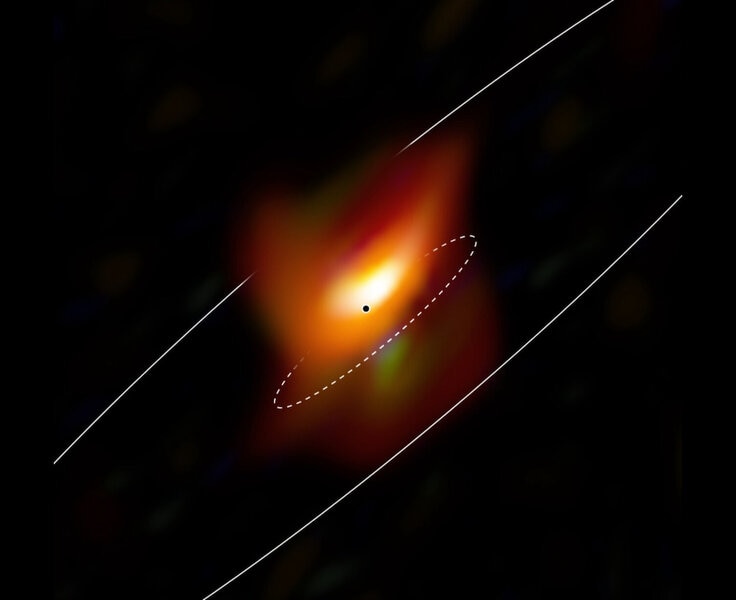How do you hide a supermassive black hole? Dust. Lots and lots of dust.
New observations show M 77's black hole is hidden by thick dust.

Not all galaxies are quiet.
Some are what we call active galaxies, where the supermassive black hole in their cores are actively feeding on material. The material forms a flattened disk around the black hole which heats up to infernal temperatures and gets so bright it can outshine all the stars in the galaxy combined.
Active indeed.
Over the decades astronomers found many different kinds of active galaxies; some where they are very bright in radio and infrared light but not so much in visible light (the kind we see) or higher energy forms like X- and gamma rays. And some blast out those high-energy forms of light, making them what we call quasars and blazars.
Why are they different? Astronomers proposed the Unified Model of Active Galaxies: a model that proposes a thick disk of dust around the supermassive black hole, so thick it blocks the high-energy light from the side, and letting it through from the top and bottom. Then, all these galaxies are very similar, but what changes is the orientation with respect to us. If we see the disk from the side it blocks a lot of the light, but if we see them face-on all the high-energy light gets through.
This model does a great job explaining a lot of the active galaxies we see… except M 77 was a problem.
This gorgeous spiral galaxy is about 45 million light years from Earth, and is bright enough to be seen with a small telescope (I've observed it myself). It has a bright nucleus, and over the years has been identified as an active galaxy. We don't see high-energy light from it, so we must be seeing the dust disk more or less edge-on according to the Unified Model.
However, some recent observations showed that a dust ring about 1.5 light years across around the galaxy's core was too thin, and we see it from too high an angle, to block the light coming from closer in to the black hole. Yet the light must be blocked or else we'd see it. What's going on?
New observations using the European Southern Observatory's Very Large Telescope equipped with a super-high-resolution infrared camera called the Multi AperTure mid-Infrared SpectroScopic Experiment (MATISSE) provide an answer: The dust really is very thick, and does block the light (link to paper).
The MATISSE observations were at long wavelengths of infrared light — from 3 out to 13 microns, with wavelengths (think of them as colors) from 5 to more than 15 times the reddest light the human eye can see. Light at that wavelength looks at dust of lower temperature than previously observed, and the range allows astronomers to understand the structure in the dust — material closer to the black hole will be warmer then material farther out, and emit at different wavelengths.
When compared to observations taken the Atacama Large Millimimeter/submillimeter Array (or ALMA) that show molecular gas swirling around the black hole, they were able to get a better idea of where the supermassive black hole is located. They find that it isn't where it was previously thought to be, and is instead a bit lower down in the previously seen ring of material, and is being blocked by a much denser disk of material that extends out for several dozen light years.
AHA! This means that in fact the light emitted very close in to the black hole is indeed being blocked by the denser material, and that's why we don't see the higher-energy light that should be spewing out.
For a while there it looked like the Unified Model was in trouble — if it doesn't work for one of the closest active galaxies in the Universe, how can we trust it at all — but these new observations support it being the accurate representation of how the inner workings of these galaxies are constructed.
That's a relief. The Unified Model has done a wonderful job of explaining a lot of the phenomena we see in active galaxies, from the kind of light emitted to the structures that emit them, including in some galaxies a thick torus of dust, focused beams of matter and energy blasting out called jets, and the all-important accretion of material feeding the black hole itself. This is hard-won knowledge that has taken decades to work out, and thousands upon thousands of observations of galaxies across the electromagnetic spectrum using telescopes on Earth and in space.
It's nice to see it still works.

































